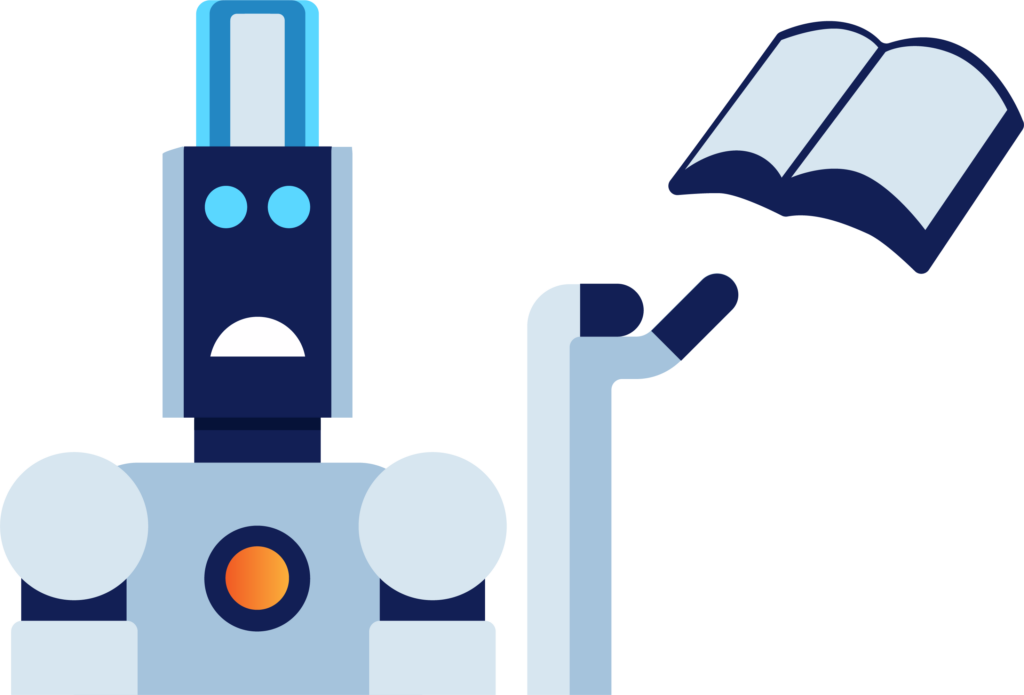Since the advent of machines, humans have been working with them to make large jobs more manageable. This has not changed throughout the years, even as the form the machines take has continually advanced. Today, computers algorithms and AI run many tasks for businesses, including programmatic media buying. However, at Kaden, we believe that to do the job right, there needs to be an element of collaboration between our human team members and the machine learning technology that executes on spend. This is because on their own, machines have certain deficiencies (in creative thinking, flexibility, and leadership), and humans struggle with bias. Together, they can play to each other’s strengths and help eliminate each other’s weaknesses.

Machines, learning
Yes, machines are wonderful tools that, in the case of our AI, can manage immensely large quantities of data and volumes of traffic. Our technology can assess amazing amounts of user-level and site-level information and help our team find value much faster than humanly possible. Kaden can run over one million queries per second and place bids at fractions of a second because that is necessary in the programmatic buying chain. So of course, we could not do our jobs without this technology.
On the other hand, machine learning is a rigid, rule-based system. It first requires humans to prescribe rules for it to function. Then it can only operate based on the rules it knows. While the very definition of machine learning (an application of AI that has the ability to learn and improve from experience) implies that it can teach itself, there are limitations to what an AI can understand. For example, AI can search given data for certain patterns that lend well to making sophisticated bidding decisions and helping campaigns to scale. AI cannot look for those same patterns in data that was not provided, even if that data may better inform purchasing.
To simplify a bit, machines need access and discretion. They need to be given data to analyze, and assigned rules to use in learning to understand that data. Humans are then the providers of these missing factors. Additionally, humans are dynamic and creative problem solvers! Certain losses in efficiency and optimization are risked if a human is not monitoring a machine learning program. Someone must be responsible for accounting for anomalies in the data, which machines can’t accommodate.

Humans, assisting
We understand, then, that humans can provide machines with the information they need to operate, and monitor data for outliers. There is more to the human-machine relationship in the programmatic business, though. When it comes to campaign management, it is extremely beneficial for advertisers to be able to have an authentic conversation with human management about the status of their campaigns. Humans foster transparency and build relationships with each other in ways that machines do not. We have empathy and intuition.
Speaking of empathy, that’s important in decision-making! Because humans are empathetic, they can look at sites and creatives and understand intuitively why another human would or would not react to it in a valuable way. It can literally pay to have humans reviewing the sites and creatives assigned to a campaign because they will understand the human appeal. That appeal is essential when we are looking to attract human users for apps!
For all their splendid qualities though, humans are not without flaw! One major issue that humans struggle with, which teamwork with machines can alleviate, is bias. We often think that we know what is best, based on what we perceive. There is a blocker known as confirmation bias, wherein we work not purely to solve a problem, but to achieve a specific desired outcome. There are a few examples of this struggle:
Demographic bias: a gaming app may see their game as being appealing to 20-40 year-old males, and would therefore request targeting that audience, in spite of a reality where 50% of their users are 40+ females.
Business strategy bias: a brand may have seen success with interstitial banner creative, and then insist on running traffic only for these placements, instead of investing in video or playable creative that could demonstrate value in a different way to a different audience.
Creative bias: advertising, like art, is subjective. Data is necessary for understanding the appeal of an image, video, or interactive piece, which is why we perform A/B testing. Without data, an advertiser may insist on the creative for which their team enjoys the aesthetic, rather than one which is truly appealing to their target.

Teamwork, accelerating
Because of bias, humans need machines to analyze data and run tests. Because of a lack of access and discretion, machines need human cooperation. What this boils down to is that partnership and collaboration can provide much more value than a black box buying traffic. Machines do heavy lifting for humans, and humans do precision work for machines. This teamwork is a great achievement that leads to more successful programmatic buying, and it is why Kaden will always use human management to cover what machine learning can’t do on it’s own.

 Português
Português 韓國
韓國 日本
日本
